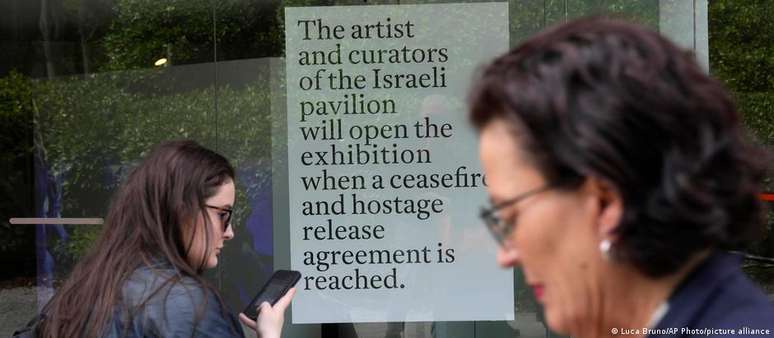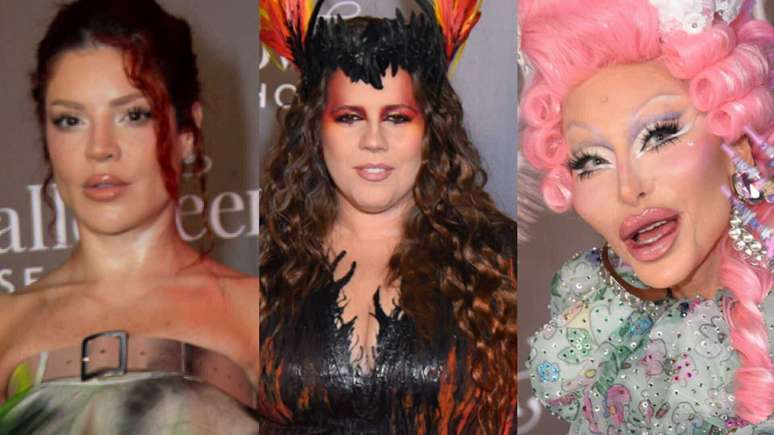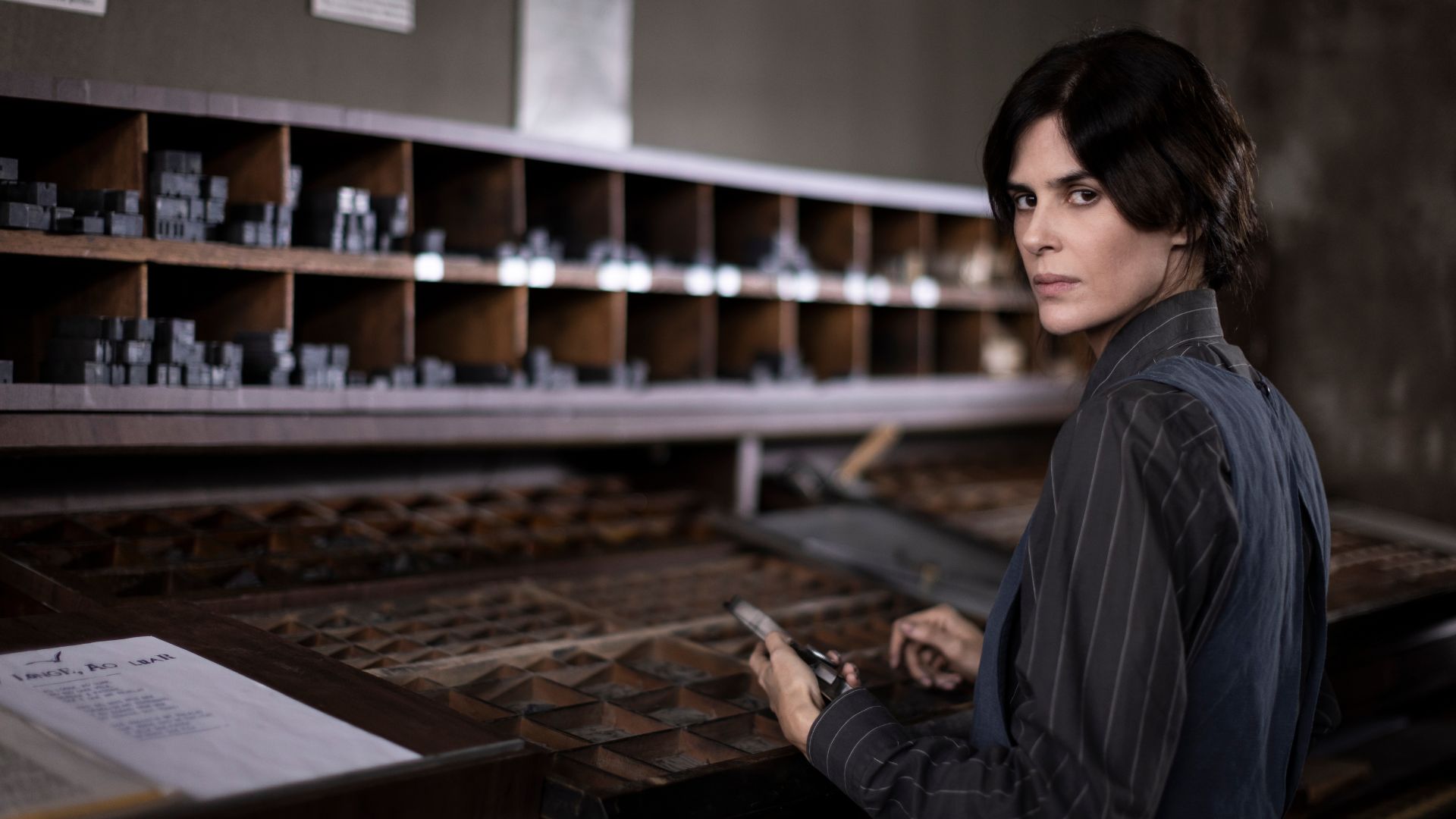Directed by Brazilian Adriano Pedrosa, the art festival reflects conflicts in the rest of the world. Palestinians call for exclusion from Israel; Africa wants decolonization. Francis is the first pope to visit the Biennale The Venice Biennale is one of the most prestigious international visual arts festivals in the world. In 2024 it will take place from 20 April to 24 November, parallel to Documenta in Kassel. In the previous edition, the Italian city of Navigli broke all records, attracting more than 800,000 art enthusiasts, two thirds from abroad.
In the 60th edition, the worsening of the conflict in the Middle East gives new tension to the event. A collective of pro-Palestinian activists, Art Not Genocide Alliance (ANGA), calls for Israel’s exclusion. In an open letter he criticized the “double standards” of the organizers who, after condemning Russia’s war of aggression in Ukraine, are now silent about Israeli military operations in the Gaza Strip. The online document already has almost 24 thousand signatories.
The Biennale rejected calls for a boycott: its curators had already decided on the design and participants of the central exhibition long before the October 7, 2023 attacks on Israeli soil by the Islamic fundamentalist group Hamas, which sparked retaliation in Gaza.
Israel protests, Russia’s pavilion remains empty
But now the doors of the Israeli pavilion will remain closed anyway. The featured artist, Ruth Patir, born in New York in 1984, announced in a statement on Tuesday (16/04) that the exhibition will only open “when a ceasefire and hostage release agreement has been reached”.
“The decision of the artist and the curators is not to erase themselves, nor the exhibition; they have instead chosen to take a position of solidarity with the families of the hostages and with the broader community calling for change in Israel”, yes reads on the Patir website. Since 1950, Israel has maintained a national pavilion in Venice.
The work M/otherLand (a play on words between “Motherland” and “Other land”) contains a video installation with old museum figurines: “destroyed women come back to life and take part in a procession, in a collective public expression of pain, grief and anger. The camera’s point of view is that of an observer or witness to the scene, thus claiming a subjective and corporeal vision of the events of the world.”
Meanwhile, Russia’s permanent pavilion will once again be empty. The Biennale has not officially excluded the country, but following the large-scale invasion of Ukraine on February 24, 2022, the selected Russian artists and curators renounced participation under the national flag. Ukraine is present with the collective exhibition Net making.
Foreigners everywhere, light on decolonization
Entitled Strangers Everywhere, the main exhibition is curated by the Brazilian Adriano Pedrosa, the first director of the Venice Biennale from the South of the world. His goal is to showcase art from less privileged and less industrialized regions.
Thus, the primary focus of the exhibition – which extends through the park of the Giardini della Biennale, the warehouses of the historic Arsenale shipyard and other places in the lagoon city – are “the artists, themselves, foreigners, expatriates, diasporic, emigrants, exiles or refugees,” Pedrosa explained in a statement.
The title of the 60th edition, in which 330 artists participate, is inspired by a work by the Parisian collective Claire Fontaine, which presents the slogan “Foreigners everywhere” in 53 different languages, on the neon signs that now illuminate the Arsenale. There, most of the 88 countries that do not have their own pavilion also present their own exhibitions.
Four nations will debut in 2024 at the world’s oldest art festival: Benin, Ethiopia, Tanzania and East Timor; while Nicaragua, Panama and Senegal will have their own pavilion for the first time. The African continent has particularly strengthened its presence in Venice: Ghana and Madagascar debuted in 2019, followed by Uganda, Cameroon and Namibia in 2022.
Before the opening of the edition, the curator of Benin, the Nigerian art critic Azu Nwagbogu, told the press that he intends to shed new light on the decolonization of art: in addition to the restitution of objects, he wants to promote a “restitution of knowledge “. With the help of a “resistance library”, he aims to give women a voice on issues such as African identity, ecology and science.
Asked if he thought African voices were sufficiently represented in Venice, he said he would “like to see many more of them”: “More importantly, I would like to see more cultural infrastructure built and supported on the continent [europeu] and more support for those impressive events we have already built across Africa.”
Germany “on the threshold”, the pope’s debut
Among the 28 permanent pavilions of the Gardens, Germany’s program opens with an installation by the Berlin theater director Ersan Mondtag and the Israeli artist Yael Bartana: under the title Thresholds, they undertake an exploration of the past and the future inspired by different concepts artistic.
The German curator in 2024 is the Istanbul-born architect Çağla Ilk, co-director of the art salon Kunsthalle Baden-Baden. As for the title of the exhibition, he explains that on the threshold “there is no certainty of anything”.
For its part, the Vatican is responsible for one of the exhibitions that will attract the most attention in 2024: its pavilion is located in the women’s prison in Venice, inside which the inmates will accompany visitors on an artistic journey. Pope Francis has promised to visit the pavilion, as the first pontiff at the Venice Biennale in the entire history of the event.
Indigenous: foreigners in one’s own land
The Brazilian pavilion will host the exhibition Ka’a Pûera: we are walking birds, by Glicéria Tupinambá and guests, curated by Arissana Pataxó, Denilson Baniwa and Gustavo Caboco Wapichana. During the exhibition, the place will be renamed Pavilhão Hãhãwpuá, a Pataxó term to indicate the territory which, after colonization, became known as Brazil, but which has had many other names.
The Brazilian exhibition highlights the memory of the forest, capoeira and camouflaged birds, as a metaphor for the struggles of Brazilian indigenous peoples and their strategies of rebirth and resistance.
Artist Glicéria Tupinambá brings the perspective of the Biennial’s overarching theme, “foreigners everywhere,” to the reality of Brazil’s indigenous populations, whose history includes centuries of marginalization in their own territory.
Source: Terra
Rose James is a Gossipify movie and series reviewer known for her in-depth analysis and unique perspective on the latest releases. With a background in film studies, she provides engaging and informative reviews, and keeps readers up to date with industry trends and emerging talents.








